Why Bridges transition model could change the way we change.
Back in the 90’s William Bridges developed a model that articulated the psychological response that we go through as humans when we experience change; namely in a work place or organisation (but don’t let that stop you applying it to life in general). He articulated the emotional transition from something ‘ending’ to ‘new beginning’. He developed a three stage model that is referred to as Bridges Transition Model.

I am a BIG FAN of this model, it enables personal journeys to be supported by an organisation, it doesn’t liken change to grief (more on my Change Curve opinion soon) and its absolutely about the human part of change.
Yes, there are limitations; there’s no solution strategy so you have to think about what you are being told rather than following a tick sheet, people can move a different paces, so the path to New Beginning may start to feel well trodden and you cant make allowances for culture (not that I think you should do that anyway?!). But it is superb, as people during a period of upheaval or change. In brief they are;
- Ending Phase is about saying goodbye to an old situation or ways of doing things. It is not easy but it doesn’t always need to come with or create negative emotions. You have to start here to transition, accepting that you are moving on
- Neutral Zone is all about what will be the future, it can feel chaotic and un chartered, you’ll search for stability and something to hook onto. It can feel like the undercurrent at the sea; not too sure what’s pushing and pulling you.
- New Beginnings is about accepting the future state, the new world you find yourself it. It will need you to be open and able to adapt and learn
Using Bridges Transition Model gives a different perspective, an opportunity for change leaders to understand the emotional perspective of those affected by the change and actively support transition. It takes away the individual nature of the Change Curve where the individual is both the cause and the solution and creates a group of individuals moving through something, together. But how do we move?
Ending Phase the most important thing right now, being clear on the purpose and extent of change that is impacting individuals; this includes what’s not changing. Empathy goes along way during endings, respecting the lived experiences without trying to solve or take away agency of the individual.
Neutral zone the experiences here can vary, so the most important think to focus on is how to get through it; what can you give as a hook to keep people moving on their journey. Be clear about new realities and changes ahead, provide space and support for open dialogue, creativity and support for creating a new way. I genuinely believe that the Neutral Zone can suck up time and energy if we don’t enable our people to travel through it.
New Beginning not quite time to relax, but a great opportunity to recognise and solidify the new world. Learn from the journey and from experiences and commit to act on that learning in order to sustain the change and support future changes. Not everyone arrives here at once, and as the saying goes nobody gets left behind so use this as the opportunity to circle back and ensure everyone can see a path through.
Above is the graph we use to plot where people are in their journey. Reflect on a change you are going through; where do you think you’d be and where are you heading too? How long have you been there? and what do you need to move on? Give it a go and see your change from the perspective of someone who really gives a toss about the human aspects of change.
